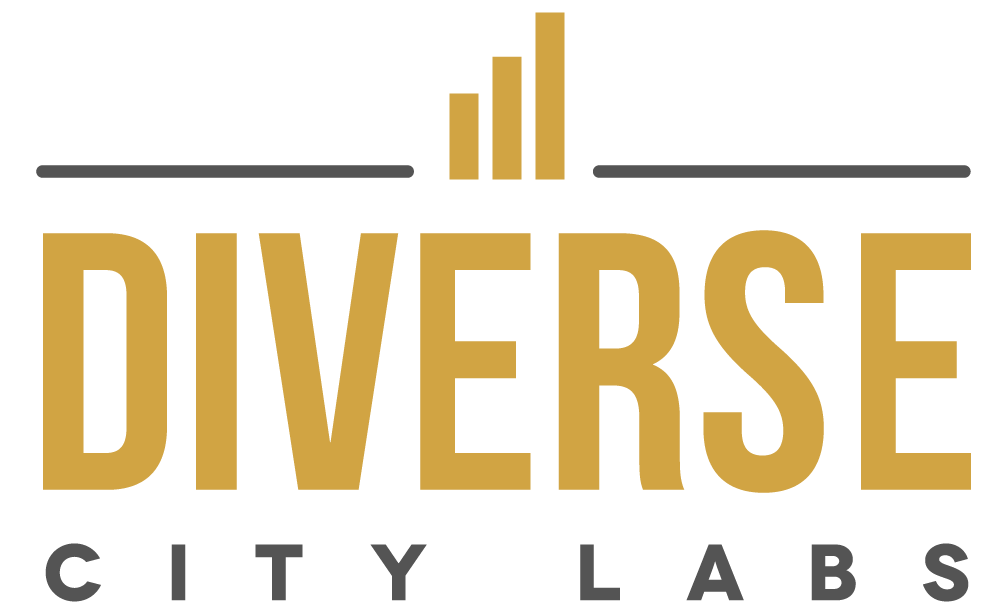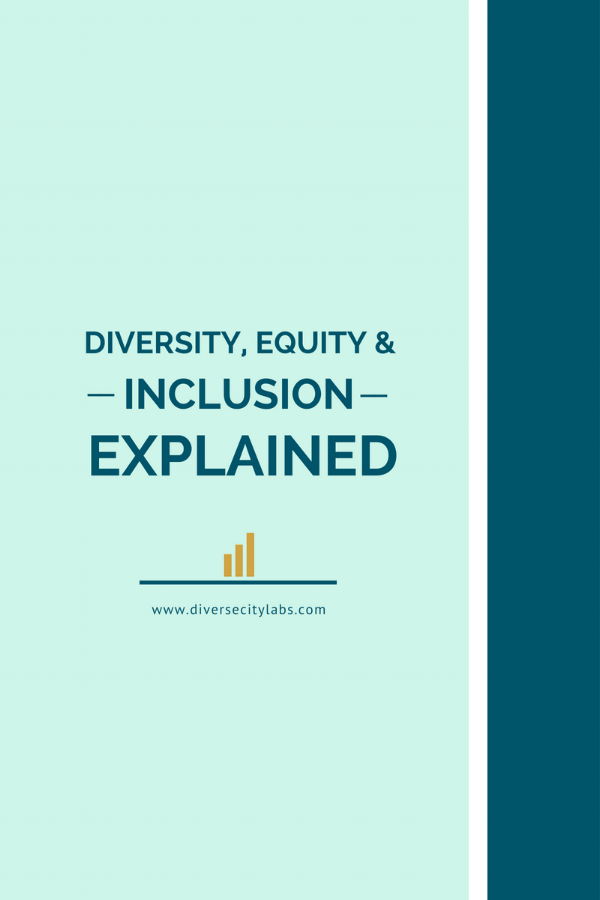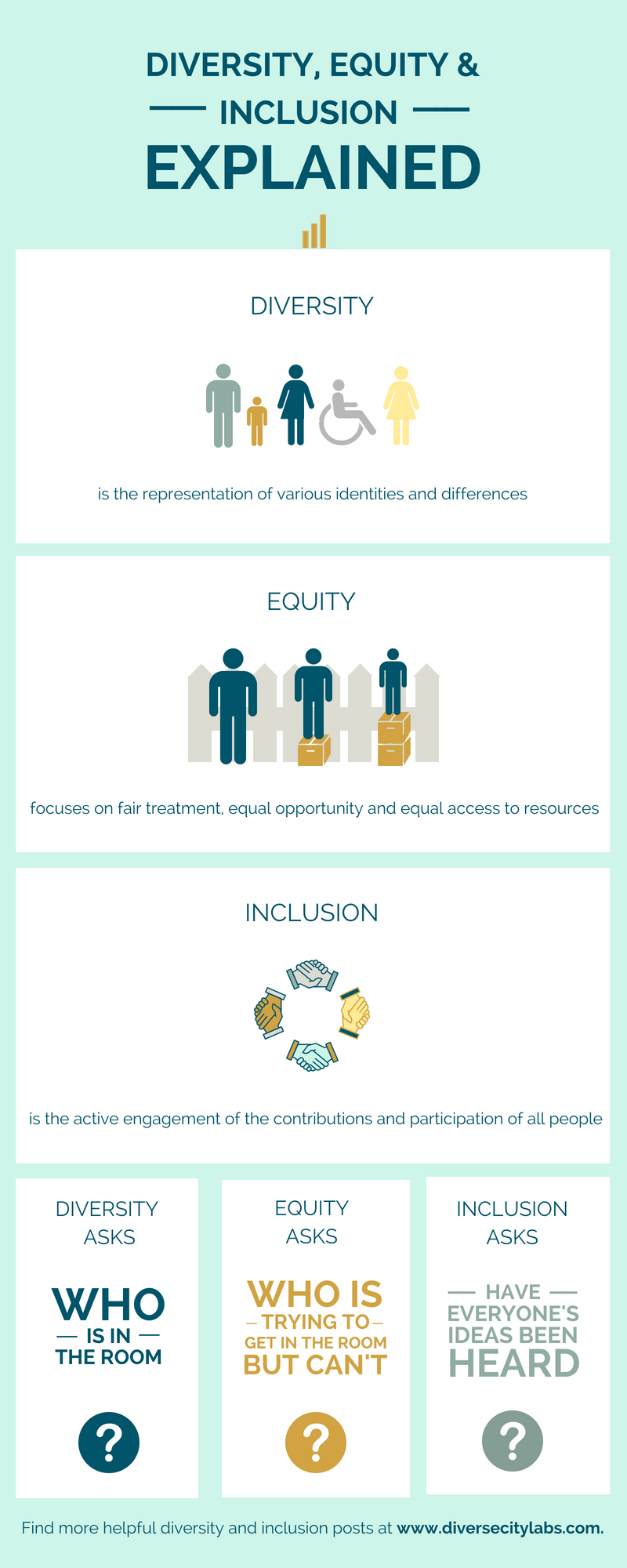Diversity. Equity. Inclusion. You’re sure to find any combination of these words being used to describe the important work of leveraging differences and cultivating a sense of belonging within organizations.
But, do you honestly know what they mean? And if I asked, would you be able to distinguish the subtle differences behind each of these terms?
Being able to distinguish between these 3 terms is a critical first step in order to effectively design goals and strategies around them.
If you’re curious about the subtle differences between diversity, equity and inclusion, check out this post for a primer and a helpful infographic.
What is diversity?
Diversity can be defined as the representation of various identities and differences of individuals in a group. For example, diversity can be captured by a set of descriptors such as race, ethnicity, gender, religion, nationality, sexual orientation or socioeconomic status.
One clarification I’d like to make is that diversity only exists in relationship to others when describing a group.
A person cannot be diverse. A person is a unique individual.
I’ve noticed a tendency (among myself and others) to describe an individual as diverse – for example, “We are seeking a diverse candidate for this position.”
Think about all the ways this terminology can get in the way of what we truly mean. Making strides regarding diversity requires shifting our language to reflect our true intentions.
Try it yourself. Next time, instead of saying, “We are working to diversify our company leaders,” say, “We are working to ensure that there are more women and people of color in leadership roles within our company.”
This subtle change in language can help us to clarify our goals, which can lead to more concrete strategies to achieve them.
What is equity?
Equity is defined as a focus on fair treatment, equal opportunity and equal access to resources. In particular, equity is a process that recognizes the existence of advantages for some and barriers for others.
As a result, we don’t all start from the same place, and equity works to level the playing field.
In my workshops, I like sharing concrete examples of inequity in the real world. For example, in a well-known study, researchers found that during a hiring process, candidates with “white-sounding names” such as Emily and Greg were 50% more likely to receive a call for an interview than candidates with “African-American-sounding names” such as Jamal and Lakisha.
Another study (and interactive chart) uncovered gendered language used in reviews posted on the website RateMyProfessor.com to describe male and female teachers. Many of the most positive words, such as “smart” and “genius,” were more likely to be used to describe men. On the other hand, words such as “bossy” and “demanding” were more likely to be used to describe women.
These examples show that an “advantage” might be having a white-sounding name or being perceived as male. And having an African-American-sounding name or being perceived as female presents a “barrier” in the hiring or evaluation process.
Inequitable processes are particularly undesirable because they create unintended, unwanted outcomes. Strategies that seek to create equitable processes are those that intentionally strive to level the playing field for those who encounter unintended “barriers” to access and opportunity.
What is inclusion?
Inclusion is the active engagement of the contributions and participation of all people. It is the process that enables people with different identities to feel valued, leveraged and welcomed within a given setting.
The important thing to realize is that inclusion is not a natural consequence of diversity.
Inclusion requires an intentional focus on creating an environment in which any individual or group feels welcomed and able to fully contribute.
Inclusion often requires us to look outside of our own experiences to understand how individuals with different identities perceive the environment and its impact on their ability to thrive.
A few concrete examples of strategies to cultivate an inclusive environment include creating Employee Resource Groups within your organization focused on different identities and interests, establishing family-friendly policies such as parental leave and listing preferred pronouns on conference nametags.
I hope these distinctions are helpful as you work to advance diversity, equity and inclusion within your organization.
To summarize, check out this Diverse City Labs infographic explaining the differences between diversity, equity and inclusion.



